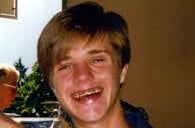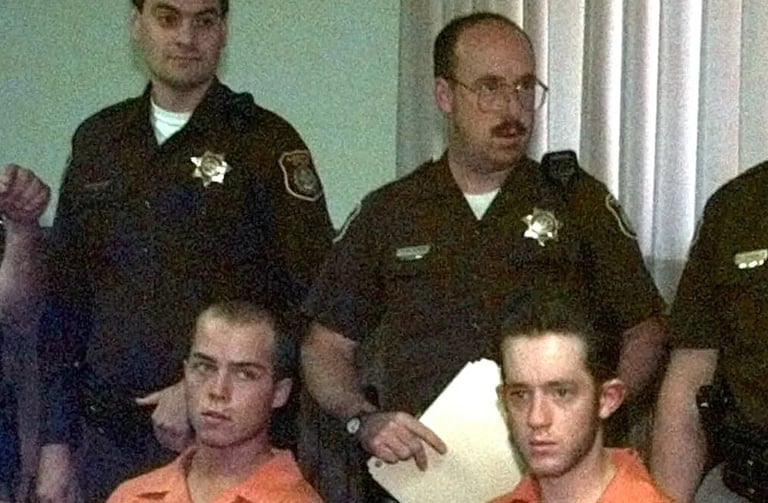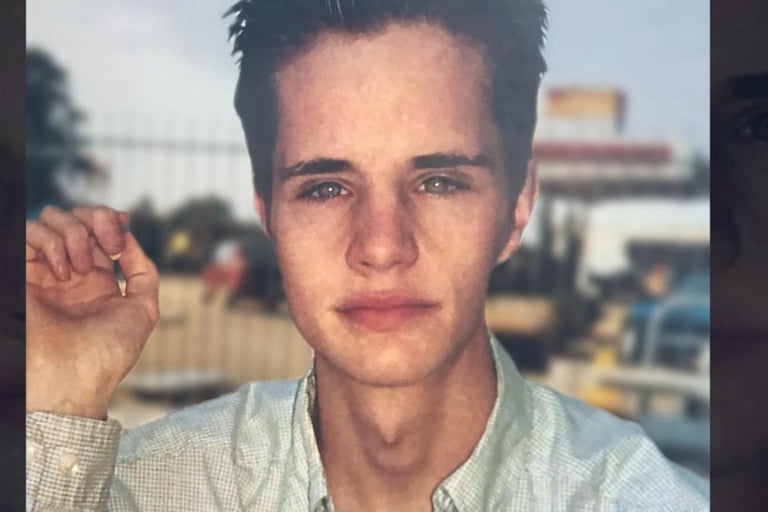The Dark Legacy of Hate: Remembering Matthew Shepard
A haunting look at the brutal 1998 murder of Matthew Shepard — a young gay man whose death exposed the deep roots of hatred still embedded in society. This post explores the violence, the aftermath, and the lasting impact his story had on hate crime legislation, LGBTQ+ awareness, and the fight for human dignity. We don’t just remember what happened — we confront why it happened. Because remembering isn’t enough. We have to name the hate.
DISTURBING CASESGRIM REALITYSINS OF THE FLESHABYASSNEWS
7/31/20253 min read


He was 21. Soft-spoken. Slight. Open-hearted in a world designed to crush difference. On a cold October night in 1998, Matthew Shepard walked unknowingly into the arms of two men who saw his kindness as weakness — and his identity as a target.
What happened to him in the hills outside Laramie, Wyoming was not just a murder. It was an execution fueled by hatred, ignorance, and fear, born in a culture that taught men like Aaron McKinney and Russell Henderson that violence was a form of masculinity.
This is a chronology — not just of events, but of societal rot. A slow, methodical unspooling of what happens when hate is normalized and compassion is crucified.
October 6, 1998 — The Trap
Matthew met Aaron McKinney and Russell Henderson at the Fireside Lounge in Laramie. The two lured him into their truck under the false promise of a ride home. Instead, they drove him to a remote area outside the city.
There, they beat him with a .357 Magnum pistol, crushed his skull, tied him to a wooden fence in near-freezing temperatures, and left him to die. He was discovered 18 hours later by a cyclist — mistaken at first for a scarecrow because of the way his body had been bound and abandoned.
He was still breathing.
October 7–12, 1998 — The Decline
Matthew was rushed to Poudre Valley Hospital in Fort Collins, Colorado. He never regained consciousness. His brain stem was crushed, and his injuries were irreversible. The hospital was overwhelmed by the outpouring of grief — candlelight vigils, national media coverage, and urgent calls for hate crime legislation.
On October 12, Matthew Shepard died. America changed — or pretended to.
His murder sparked outrage, mourning, and an uneasy mirror. Because this wasn’t a random act. This was an act of cultural violence, committed by two men who believed they’d done something natural.
October 1998–1999 — Trial and Exposure
Both McKinney and Henderson were arrested within days. McKinney tried to claim “gay panic” — that Shepard made sexual advances that triggered uncontrollable rage. The courts didn’t buy it.
Henderson pleaded guilty to avoid the death penalty. McKinney was also sentenced to life without parole. Neither showed real remorse. Neither seemed to grasp what they had destroyed.
The trials revealed a deeper sickness: a culture where hatred simmers under the skin, passed down in jokes, sermons, and silence. Shepard became a symbol — not of weakness, but of how fragile dignity becomes when society looks the other way.
Legacy of Blood and Light
The Matthew Shepard and James Byrd Jr. Hate Crimes Prevention Act was signed into law in 2009, over a decade later. It expanded the definition of federal hate crimes to include those motivated by sexual orientation and gender identity. Too late for Matthew. Too late for James Byrd, dragged to death behind a pickup truck in Texas the same year.
But maybe not too late for the next name we haven’t heard yet. The one still walking, still breathing.
Matthew’s story isn’t just a chapter in LGBTQ+ history. It’s a warning — about what happens when cruelty becomes casual, and silence becomes consent. His murder wasn’t a rupture. It was a reveal — of the world many already lived in, but couldn’t prove until his blood hit the ground.
Final Thoughts
This isn't a story with a clean ending. It’s not a victory. It’s a memory soaked in frost, barbed wire, and the quiet breath of a dying boy looking up at the stars, alone.
Matthew Shepard didn’t die in vain. But he did die because we let hate fester — in our churches, our schools, our jokes, and our laws. His fence still stands. As does the sickness that put him there.
Embedded Keywords (for SEO, naturally included):
Matthew Shepard murder chronology, hate crime history, LGBTQ+ hate crimes, 1998 Laramie Wyoming murder, Matthew Shepard timeline, Aaron McKinney trial, Russell Henderson sentencing, gay panic defense, hate crime legislation, Matthew Shepard legacy
Sources:
The Laramie Project by Moisés Kaufman and the Tectonic Theater Project
FBI and Department of Justice archives on hate crimes
Court transcripts and trial records
Contemporary news coverage (CNN, New York Times, ABC)






The Matthew Shepard Foundation strives for dignity, respect, and equality for all individuals, especially within the LGBTQ+ community. Established to honor the legacy of Matthew Shepard, the Foundation promotes education, advocacy, and safe spaces. Through initiatives, events, and policy efforts, they empower communities and combat bias, bullying, and hate-based violence.
Despair
A dark exploration of societal decay and despair.
Void
+1234567890
© 2025. All rights reserved.
Any comments, business inquiries, ideas, or stories, let us know
